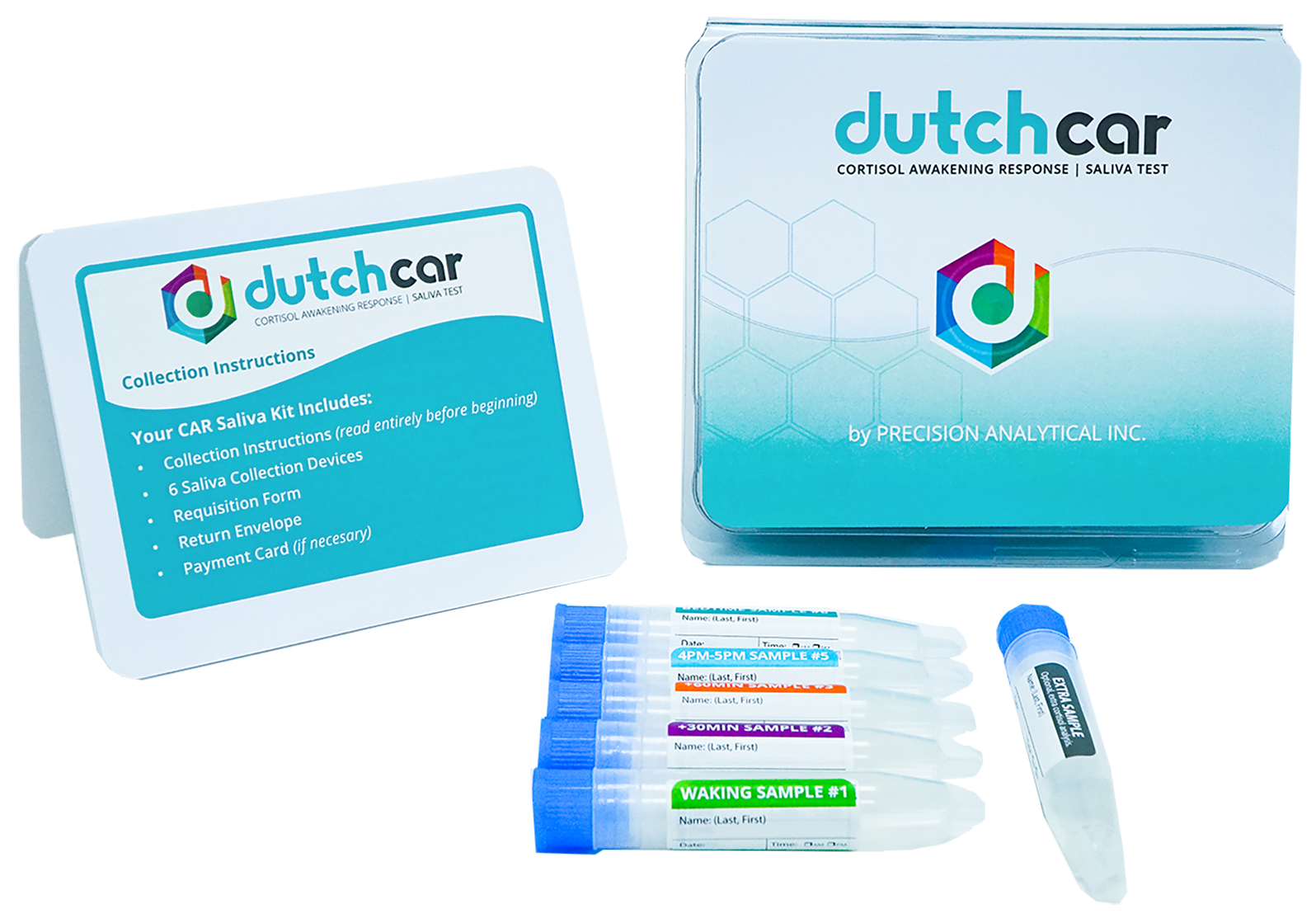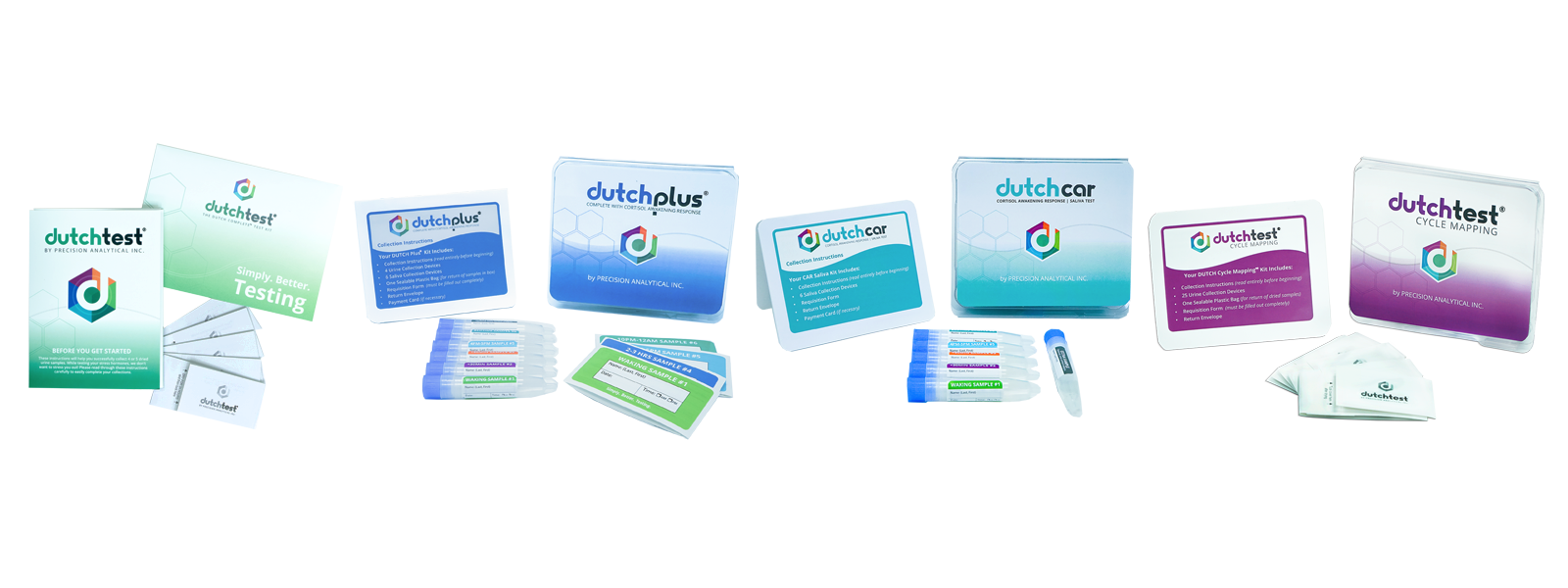What Does DUTCH Test? 4 Groups of Hormones, Metabolites, & Other Biomarkers
Clinical Consulting Team
What Does DUTCH Test? 4 Groups of Hormones, Metabolites, & Other Biomarkers
by Clinical Consulting Team
DUTCH exists to make it easier for patients and their healthcare providers to find answers to complex clinical questions through industry-leading functional hormone testing and education. The DUTCH Test is a comprehensive sex and adrenal hormone test that includes metabolites and organic acids to bring patient hormone status into focus.
In their active form, hormones act as chemical messengers to control, facilitate, or trigger various processes in the body. As active hormones complete their work and new hormones are produced, active hormones need to be cleared from the body via the urine.
Steroid hormones do not dissolve well in water so they cannot pass directly into the urine. Instead, they must be broken down in the liver and kidneys to form smaller, water-soluble particles (known as metabolites) which can be excreted. Certain metabolites can be harmful if they are produced in excess, which is one important reason to test.
Metabolites are sometimes difficult to detect with traditional methods but can be extremely important indicators for certain conditions. Urine testing is the best method for testing reproductive hormone metabolites. Testing these metabolites can give healthcare practitioners an in-depth picture of why their patient’s overall hormones are elevated, lacking, or point toward specific symptoms.
Estrogens, Progesterone, and Androgens

The DUTCH Test evaluates metabolites and biomarkers derived from estrogens, progesterone, and androgens.
Estrogen Analytes
Progesterone Analytes
Androgen Analytes
Estrone (E1)
a-Pregnanediol
DHEA-S
Estradiol (E2)
b-Pregnanediol
Androsterone
Estriol (E3, aka 16-OHE2)
Etiocholanolone
2-OHE1
Testosterone
4-OHE1
5a-DHT
16-OHE1
5a-Androstanediol
2-MeOE1
5b-Androstanediol
2-OHE2
Epi-Testosterone
4-OHE2
Total Estrogen
The estrogen analytes measured on the DUTCH Test indicate a patient’s phase 1 estrogen detoxification status (also called hydroxylation) and phase 2 estrogen detoxification (methylation) status.
Understanding both estrogen and progesterone in the body can help providers understand estrogen-related cancer risk, autoimmunity, PMS, and fertility issues in their patients. Knowing these pathways can also assist the practitioner with potential suggestions for diet and lifestyle modification, supplementation, or hormone replacement therapy.
Androgen metabolites and biomarkers help determine the activity of 5a- and 5b-reductase. The more androgenic 5a-pathway can be useful to understand when working with men who experience male pattern baldness, cystic acne, and prostate issues. Women might experience cystic acne, female pattern baldness, hirsutism and PCOS when their metabolism favors the 5a- pathway.
Adrenal Metabolites and Biomarkers

DUTCH adrenal testing includes many more important markers than tested in blood or saliva. The DUTCH Test includes eight adrenal analytes so providers can evaluate the health of their patients’ HPA axis.
Adrenal Metabolite
Cortisol awakening response (CAR)
Diurnal pattern of free cortisol
Diurnal pattern of free cortisone
Optional extra cortisol sample
a-THF
b-THF
b-THE
Metabolized cortisol (THF+THE)
Free cortisol is the active form of the hormone which binds to receptors and turns them on. Testing free cortisol helps understand the circadian rhythm and answers questions about a patient’s low energy and sleep trouble. Metabolized cortisol is an indication of total cortisol production and metabolized through the liver in one day. This marker is specific to urine testing and cannot be found in blood or saliva testing.
The DUTCH Test includes metabolized cortisol because it can be greatly influenced by cases of hypothyroidism, hyperthyroidism, long-term stress, inflammation, insulin resistance, infection, poor liver function, anorexia, critical illness, and more. Cortisone is the inactive form of cortisol. Testing this hormone provides a secondary look at the circadian rhythm. It is also helpful to understand as some people are more prone to the deactivation of cortisol into cortisone which can further their symptoms of fatigue.
By looking at the entire adrenal picture with DUTCH testing, healthcare practitioners have a much more comprehensive look into the health of their patient’s cortisol production and response to help them achieve their goals.
Organic Acid Tests (OATS)
Organic acid tests (OATS) make up the last portion of the DUTCH Test. They include nutritional and neurotransmitter metabolites, as well as markers for neuroinflammation, oxidative stress, gut health, and melatonin.
OATs can round out hormone testing in a way that provides additional information about the nutritional status, gut, and brain health of a patient. Testing organic acids gives healthcare practitioners an even more comprehensive understanding of their patients’ overall health.

Different DUTCH Test panels offer different combinations of analytes. Take a moment to read about the analytes available on each of the DUTCH panels. You can view a side-by-side comparison of the DUTCH Complete™ , the DUTCH Plus® , DUTCH OATs , DUTCH Cycle Mapping™ , and DUTCH Cycle Mapping™ Plus in the Practitioners Resource Guide available for download through the provider portal .
Become a DUTCH Provider to gain access to comprehensive patient reports, expert clinical support, and validated and peer-reviewed research.
TAGS
Women's Health
Men's Health
Estrogen and Progesterone
Androgens
Androgens (Testosterone/DHEA)
Cortisol
Cortisol Metabolism
Organic Acids